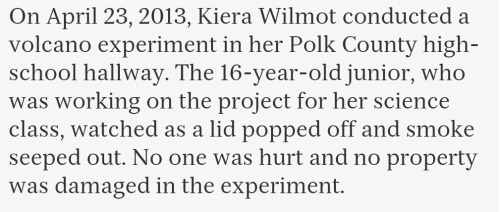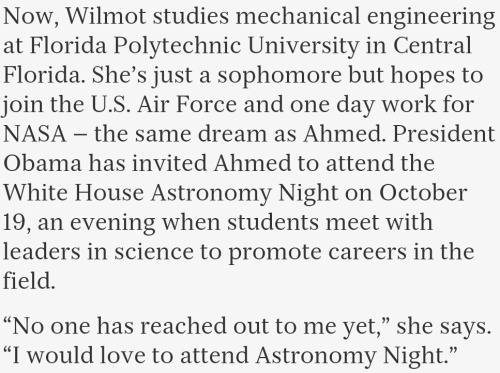How Exactly Do We Plan To Bring An Asteroid Sample Back To Earth?
How Exactly Do We Plan to Bring an Asteroid Sample Back to Earth?
Our OSIRIS-REx spacecraft launches tomorrow, and will travel to a near-Earth asteroid, called Bennu. While there, it will collect a sample to bring back to Earth for study. But how exactly do we plan to get this spacecraft there and bring the sample back?

Here’s the plan:
After launch, OSIRIS-REx will orbit the sun for a year, then use Earth’s gravitational field to assist it on its way to Bennu. In August 2018, the spacecraft’s approach to Bennu will begin.

The spacecraft will begin a detailed survey of Bennu two months after slowing to encounter the asteroid. The process will last over a year, and will include mapping of potential sample sites. After the selection of the final site, the spacecraft will briefly touch the surface of Bennu to retrieve a sample.

To collect a sample, the sampling arm will make contact with the surface of Bennu for about five seconds, during which it will release a burst of nitrogen gas. The procedure will cause rocks and surface material to be stirred up and captured in the sampler head. The spacecraft has enough nitrogen to allow three sampling attempts, to collect between 60 and 2000 grams (2-70 ounces).

In March 2021, the window for departure from the asteroid will open, and OSIRIS-REx will begin its return journey to Earth, arriving two and a half years later in September 2023.

The sample return capsule will separate from the spacecraft and enter the Earth’s atmosphere. The capsule containing the sample will be collected at the Utah Test and Training Range.

For two years after the sample return, the science team will catalog the sample and conduct analysis. We will also preserve at least 75% of the sample for further research by scientists worldwide, including future generations of scientists.
The Spacecraft

The OSIRIS-REx spacecraft is outfitted with some amazing instruments that will help complete the mission. Here’s a quick rundown:
The OCAMS Instrument Suite

PolyCam (center), MapCam (left) and SamCam (right) make up the camera suite on the spacecraft. These instruments are responsible for most of the visible light images that will be taken by the spacecraft.
OSIRIS-REx Laser Altimeter (OLA)

This instrument will provide a 3-D map of asteroid Bennu’s shape, which will allow scientists to understand the context of the asteroid’s geography and the sample location.
OSIRIS-REx Thermal Emission Spectrometer (OTES)

The OTES instrument will conduct surveys to map mineral and chemical abundances and will take the asteroid Bennu’s temperature.
OSIRIS-REx Visible and Infrared Spectrometer (OVIRS)

This instrument will measure visible and near infrared light from the asteroid. These observations could be used to identify water and organic materials.
Regolith X-Ray Imaging Spectrometer (REXIS)

REXIS can image X-ray emission from Bennu in order to provide an elemental abundance map of the asteroid’s surface.
Touch-and-Go Sample Arm Mechanism (TAGSAM)

This part of the spacecraft will be responsible for collecting a sample from Bennu’s surface.
Watch Launch and More!

OSIRIS-REx Talk Wednesday, Sept. 7 at noon EDT Join us for a discussion with representatives from the mission’s science and engineering teams. This talk will include an overview of the spacecraft and the science behind the mission. Social media followers can ask questions during this event by using #askNASA. Watch HERE.
Uncovering the Secrets of Asteroids Wednesday, Sept. 7 at 1 p.m. EDT During this panel, our scientists will discuss asteroids, how they relate to the origins of our solar system and the search for life beyond Earth. Social media followers can ask questions during this event by using #askNASA. Watch HERE.
LAUNCH COVERAGE!
Thursday, Sept. 8 starting at 4:30 p.m. EDT
Watch the liftoff of the United Launch Alliance’s (ULA) Atlas V rocket from Kennedy Space Center in Florida at 7:05 p.m.
Full coverage is available online starting at 4:30 p.m. Watch
HERE
.
We will also stream the liftoff on Facebook Live starting at 6:45 p.m. EDT. Watch
HERE
.
Make sure to follow us on Tumblr for your regular dose of space: http://nasa.tumblr.com
More Posts from Curiositytherover and Others



The Breakfast Machine by Simone Giertz
I, for one, welcome our new service-robot overloards.
[how-to guide by Simone]

These are the robots taking our jobs






This is so sad. Women are already discouraged from pursuing science. Treating us like criminals for experimenting isn’t helping.

This Wristband Tells You Exactly What Vitamins You Need

Watch This New Drone Capture Rogue Drones with a Net Cannon
Scientists at Michigan Tech University have made an interceptor drone that is capable of “catching” other drones using a mounted net cannon.See it in action: http://futurism.com/videos/new-drone-can-capture-rogue-drones-net-cannon/

Source: https://imgur.com/c4LP6eW
British astronaut Tim Peake made this timelapse of lightning storms from the International Space Station. He says it was recorded as he flew from North Africa over Turkey towards Russia.

Scientists Get Their First Glimpse At How New Memories Are Born
This is the closest we’ve come to watching new memories form in real time… http://futurism.com/scientists-get-first-glimpse-new-memories-born/

ICYMI: Robotic teddy bear, electric glue formula and more

GUYS. The future is now.
-
 dykath-blog reblogged this · 8 years ago
dykath-blog reblogged this · 8 years ago -
 fonte78-blog liked this · 8 years ago
fonte78-blog liked this · 8 years ago -
 best-hotels-posts reblogged this · 8 years ago
best-hotels-posts reblogged this · 8 years ago -
 benbharathi-blog liked this · 8 years ago
benbharathi-blog liked this · 8 years ago -
 pa-pa-plasma liked this · 8 years ago
pa-pa-plasma liked this · 8 years ago -
 iliketacosandilikeyou liked this · 8 years ago
iliketacosandilikeyou liked this · 8 years ago -
 brokentowels liked this · 8 years ago
brokentowels liked this · 8 years ago -
 poeticum-est-absurdum liked this · 8 years ago
poeticum-est-absurdum liked this · 8 years ago -
 thewitchqueen0fangmar liked this · 8 years ago
thewitchqueen0fangmar liked this · 8 years ago -
 jlmlovely reblogged this · 8 years ago
jlmlovely reblogged this · 8 years ago -
 agivemeaname liked this · 8 years ago
agivemeaname liked this · 8 years ago -
 interegnum reblogged this · 8 years ago
interegnum reblogged this · 8 years ago -
 sentientwitch-blog liked this · 8 years ago
sentientwitch-blog liked this · 8 years ago -
 crappycrapper liked this · 8 years ago
crappycrapper liked this · 8 years ago -
 docdidit liked this · 8 years ago
docdidit liked this · 8 years ago -
 interegnum reblogged this · 8 years ago
interegnum reblogged this · 8 years ago -
 juliejuno liked this · 8 years ago
juliejuno liked this · 8 years ago -
 sordidsass-blog liked this · 8 years ago
sordidsass-blog liked this · 8 years ago -
 keenturtleinfluencer-blog liked this · 8 years ago
keenturtleinfluencer-blog liked this · 8 years ago -
 tableofkantents reblogged this · 8 years ago
tableofkantents reblogged this · 8 years ago -
 tenigam reblogged this · 8 years ago
tenigam reblogged this · 8 years ago -
 tenigam liked this · 8 years ago
tenigam liked this · 8 years ago -
 nelly913-blog liked this · 8 years ago
nelly913-blog liked this · 8 years ago -
 flamingbananacat liked this · 8 years ago
flamingbananacat liked this · 8 years ago -
 thatlittledressgirl-blog liked this · 8 years ago
thatlittledressgirl-blog liked this · 8 years ago -
 science-aficionado-blog liked this · 8 years ago
science-aficionado-blog liked this · 8 years ago -
 xiomerra reblogged this · 8 years ago
xiomerra reblogged this · 8 years ago -
 xiomerra liked this · 8 years ago
xiomerra liked this · 8 years ago -
 wormfacts reblogged this · 8 years ago
wormfacts reblogged this · 8 years ago -
 aquapunkchick reblogged this · 8 years ago
aquapunkchick reblogged this · 8 years ago -
 signsofisaac reblogged this · 8 years ago
signsofisaac reblogged this · 8 years ago -
 signsofisaac liked this · 8 years ago
signsofisaac liked this · 8 years ago -
 rubi454-blog liked this · 8 years ago
rubi454-blog liked this · 8 years ago -
 lunalavendera liked this · 8 years ago
lunalavendera liked this · 8 years ago -
 willem2de liked this · 8 years ago
willem2de liked this · 8 years ago -
 doctoruniverse1632 liked this · 8 years ago
doctoruniverse1632 liked this · 8 years ago -
 roselessthorn liked this · 8 years ago
roselessthorn liked this · 8 years ago -
 purpurella-v liked this · 8 years ago
purpurella-v liked this · 8 years ago -
 leavingonajetplane7 liked this · 8 years ago
leavingonajetplane7 liked this · 8 years ago